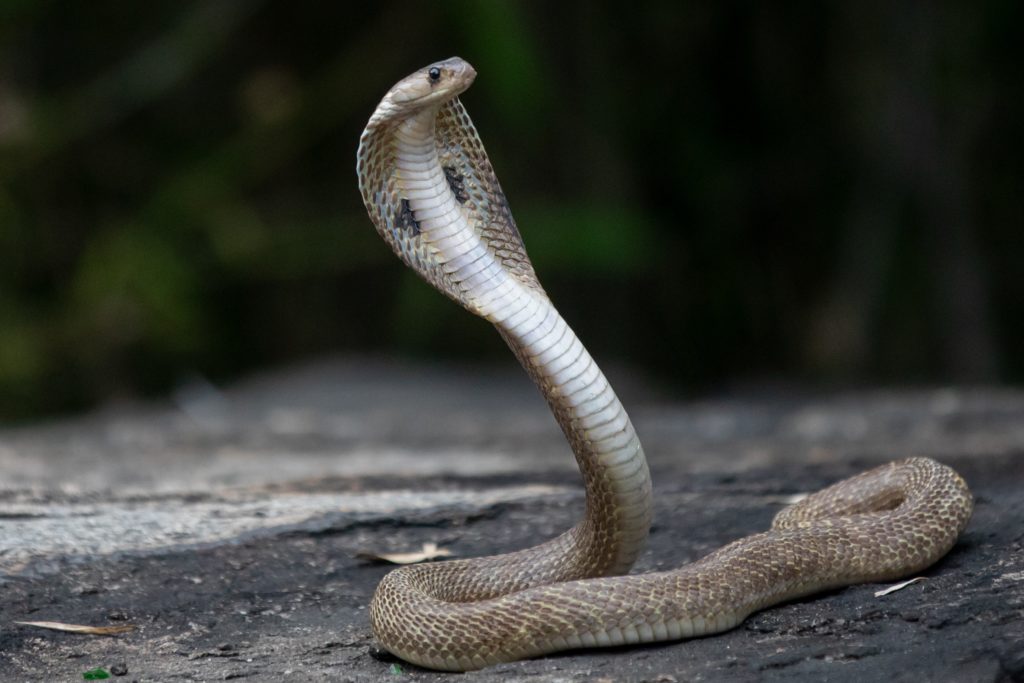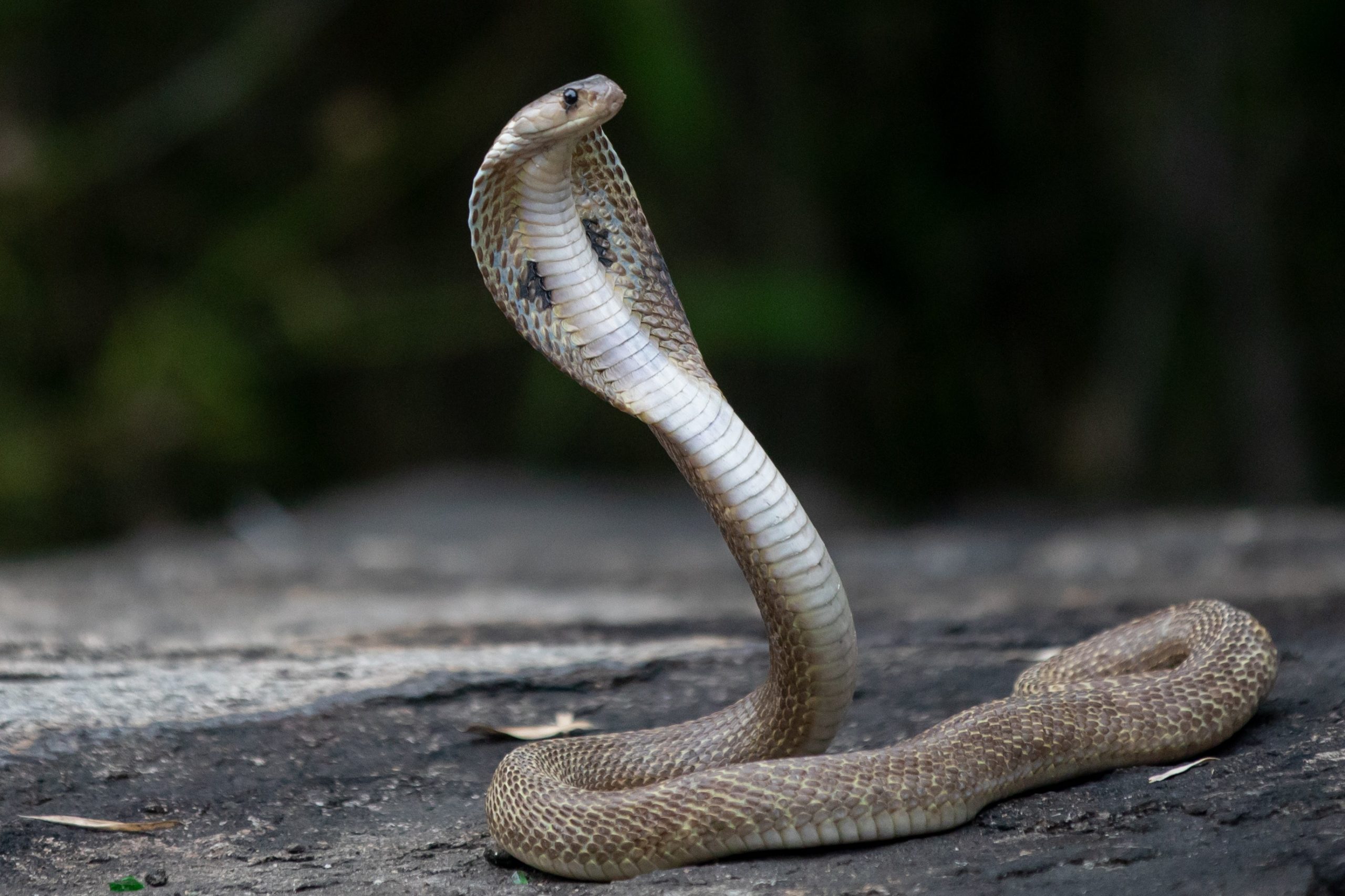
What happens when you are bitten by a venomous snake? The venom either attacks the cells, the circulatory system or the nerve system.
There are 3,500 species of snake and 600 of those are venomous. Many of them are not dangerous to people but some of them can be lethal. Venomous snakes inject venom through hollow fangs, which are modified teeth. Venom is modified saliva and snakes have evolved the ability to make venom in order to immobilize their prey as well as for self-defense.
There are three main positions for fangs in the mouth of a snake. Rear fangs that are fixed at the back of the mouth, fangs that are fixed at the front of the mouth, and fangs that are at the front of the mouth but can fold backwards or sideways. One thing that all of these fangs have in common is that they have a groove for the venom to flow down. The fangs have several folds in them, which appear to strengthen the teeth so that they don’t snap when the snake bites. One of the folds is larger than the others and this is the one the venom travels down.
Venom is a modified type of highly toxic saliva. It is made up of thousands of proteins that include neurotoxins, and enzymes. These proteins and enzymes all have different effects on the body when bitten. Venom is produced in the venom gland and venomous snakes have two of them, just under the eye, on either side of the head. They have a muscular sheath around the gland that contracts when the snake bites, forcing the venom out of the gland and down the teeth.
So, what happens when you are bitten by a venomous snake? Well, it depends on what kind of snake and what kind of venom, Snake venoms are generally divided into four categories: neurotoxin, hemotoxin, proteolytic, and cytotoxic. Neurotoxin and cytotoxic venom usually come from elapids and hemotoxin and proteolytic venoms mostly come from vipers. Let’s look at them both.
Elapids have fangs that are permanently fixed at the front of their mouths. Some elapids are mambas, tiger snakes, cobras, and taipans. When they bite you, their venom carries powerful neurotoxins. These work to either block the nervous system from sending and receiving signals, or to overstimulate the nervous system. Either way, once bitten, the prey cannot move, and this is the main purpose of the venom. It has to immobilize prey long enough so that the snake can eat it, or immobilize a predator long enough for the snake to get away. The neurotoxin starts by working on the muscles around the eyes and fixed dilated pupils, reduced eye movements, and droopy eyelids can be a sign that someone has been bitten. The tiger snake actually has a neurotoxin that not only blocks the nerve detectors but also destroys the nerves themselves.
Elapid venom is also cytotoxic. The snake venom can bind with fat and rupture cell walls. This can cause damage to organs and limbs. It can also be dangerous to the heart because some cytotoxins bind to muscles and prevent them from contracting. When this happens to the heart it can cause it to beat irregularly or even to stop beating.
Vipers usually have hinged fangs at the front of their mouth that are raised into place by the muscles that they use to bite with. The venom from a viper is proteolytic. It contains enzymes that degrade tissue. It can break down blood vessel walls and muscle tissue. This destroys muscle but it also causes muscle protein to leak into the blood, where it can poison the kidneys. Potassium also leaks out of the cells, bringing the levels of potassium in the blood to a level that is high enough to affect the rhythm of the heart, which can cause heart attacks.
Viper venom is also hemotoxic which means it destroys red blood cells. It also breaks down cells and tissues, causing incredible pain and massive internal bleeding. Some types can cause blood clotting and some types can stop blood clotting, both being lethal. It can cause significant damage to the circulatory system.
These are not the only types of venom and they are not completely exclusive. Some snakes have a little bit of both. Taipans have neurotoxic venom that clots blood very quickly. Rattlesnake venom has some neurotoxic properties, breaks down cells, and prevents blood clotting. A black mamba’s venom is neurotoxic, cardiotoxic (it causes cardiac arrest), and very fast acting. The inland taipan, which is said to be the most venomous snake in the world, carries the hyaluronidase enzyme in its venom. This enzyme increases the absorption rate of all the other toxins in its venom through the victim’s body.
Many snake bites are lethal, but they can be cured if you can get to a hospital fast enough and if that hospital has the correct anti-venom. An anti-venom is made by injecting a horse with a small amount of venom from a specific snake. The horse’s immune system produces antibodies that are taken out of the horse in blood plasma. This is then concentrated and purified in a lab. Regular antivenoms will help with all snake bites, but because all snakes carry different venom, it is important to use the correct antivenom. This can neutralize the venom and reverse some of the effects. The antivenom cannot repair the damage that the snake venom has caused. That is down to the body’s immune system. If the venom has been in the body for too long, it can still be fatal even after the antivenom.
So, different kinds of snakes have different toxins and different effects, but all snake venom is dangerous. And this is what I learned today.
https://www.nhm.ac.uk/discover/what-does-snake-venom-do-to-you.html
https://www.nationalgeographic.com/animals/reptiles/facts/snakes-1
https://en.wikipedia.org/wiki/Venomous_snake
https://theconversation.com/how-venomous-snakes-got-their-fangs-165881
https://en.wikipedia.org/wiki/Snake_venom
https://en.wikipedia.org/wiki/Viperidae
https://en.wikipedia.org/wiki/Elapidae
https://theconversation.com/mortal-poison-the-story-of-how-venom-works-50964
https://www.si.edu/spotlight/antibody-initiative/antivenom

